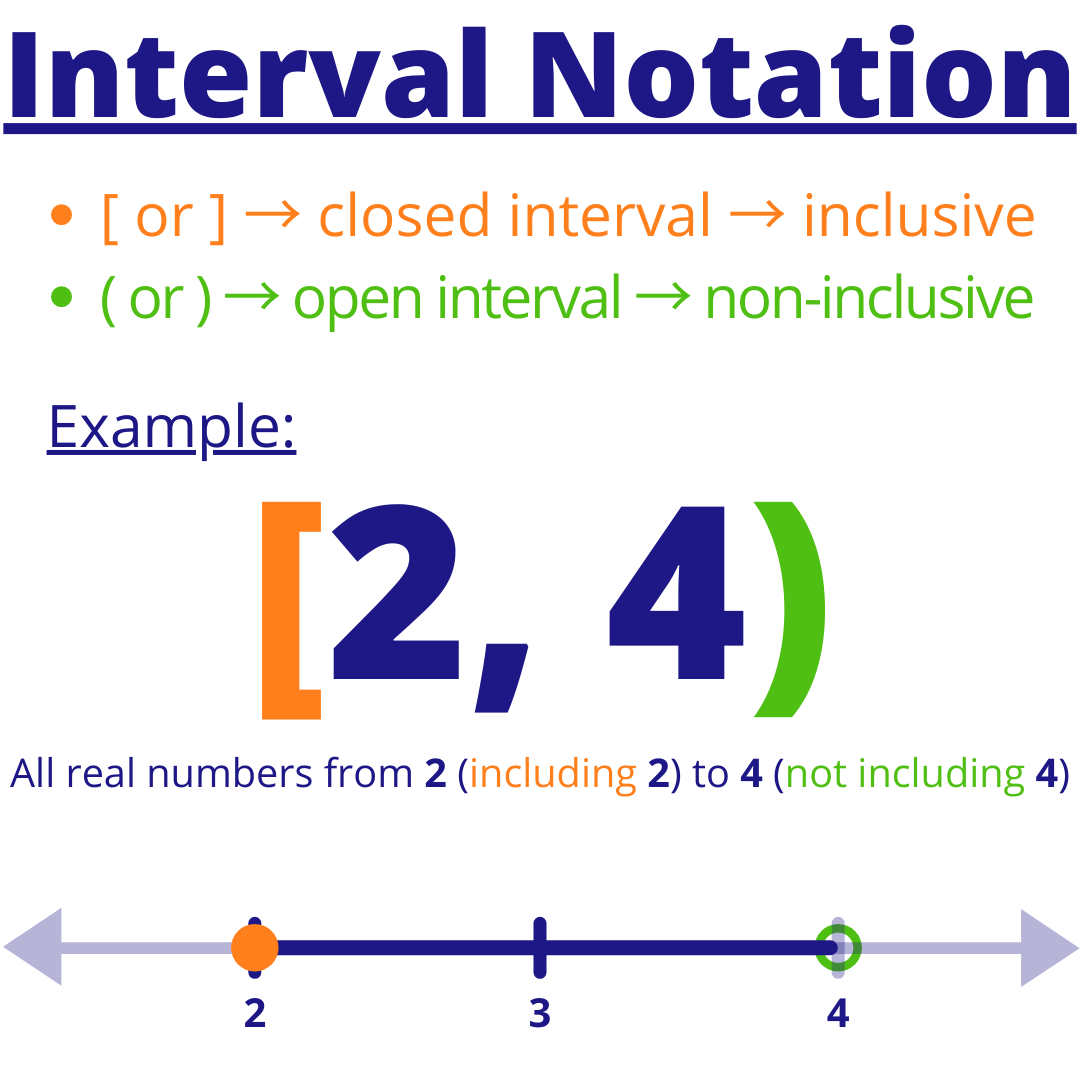


Brackets,, are used to indicate that an endpoint is included, called inclusive.Parentheses, ( or ), are used to signify that an endpoint is not included, called exclusive.The largest term in the interval is written second, following a comma.The smallest term from the interval is written first.Third, if there is an even root, consider excluding values that would make the radicand negative.īefore we begin, let us review the conventions of interval notation: Second, if there is a denominator in the function’s equation, exclude values in the domain that force the denominator to be zero. First, if the function has no denominator or an even root, consider whether the domain could be all real numbers. The following notation can be entered for both mathPad and calcPad questions unless otherwise indicated. Oftentimes, finding the domain of such functions involves remembering three different forms. Far too little set theory is included in the curriculum, and the addition of notation to denote sets constitutes a small step to improve this. Let’s turn our attention to finding the domain of a function whose equation is provided. Answer (1 of 5): On the one hand, I am glad that interval notation is taught in American high schools. Half-closed interval (half-open interval) a,b) You can substitute (or as needed. The closing parenthesis is added automatically. We will discuss interval notation in greater detail later. The closing bracket is added automatically. Step 3: Once the new window is opened, the number line representing the given interval will be displayed. ( 0, 100 ] \left(0,\text100\right] ( 0, 100 ]. To use the interval notation calculator, follow these steps: Step 1: Fill out the input fields with the interval (closed or open) Step 2: Click the Calculate button to obtain the results.


 0 kommentar(er)
0 kommentar(er)
